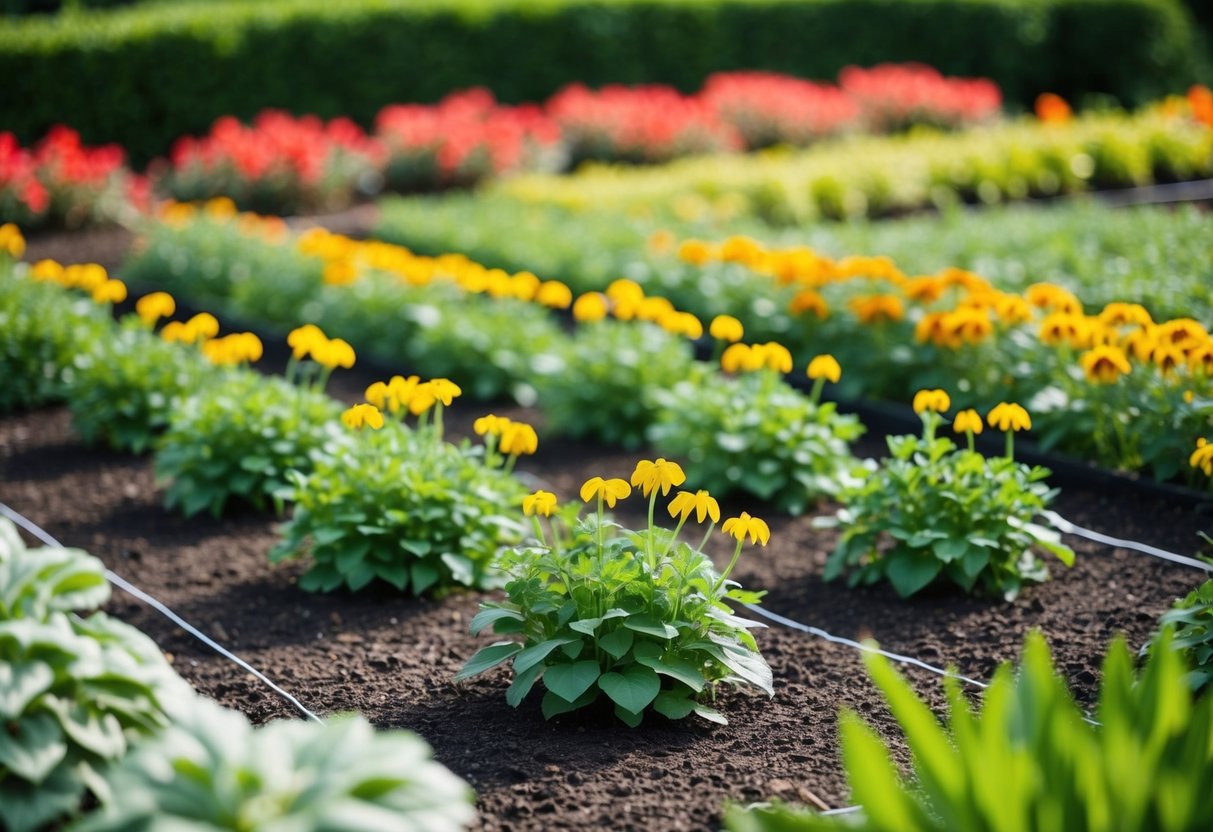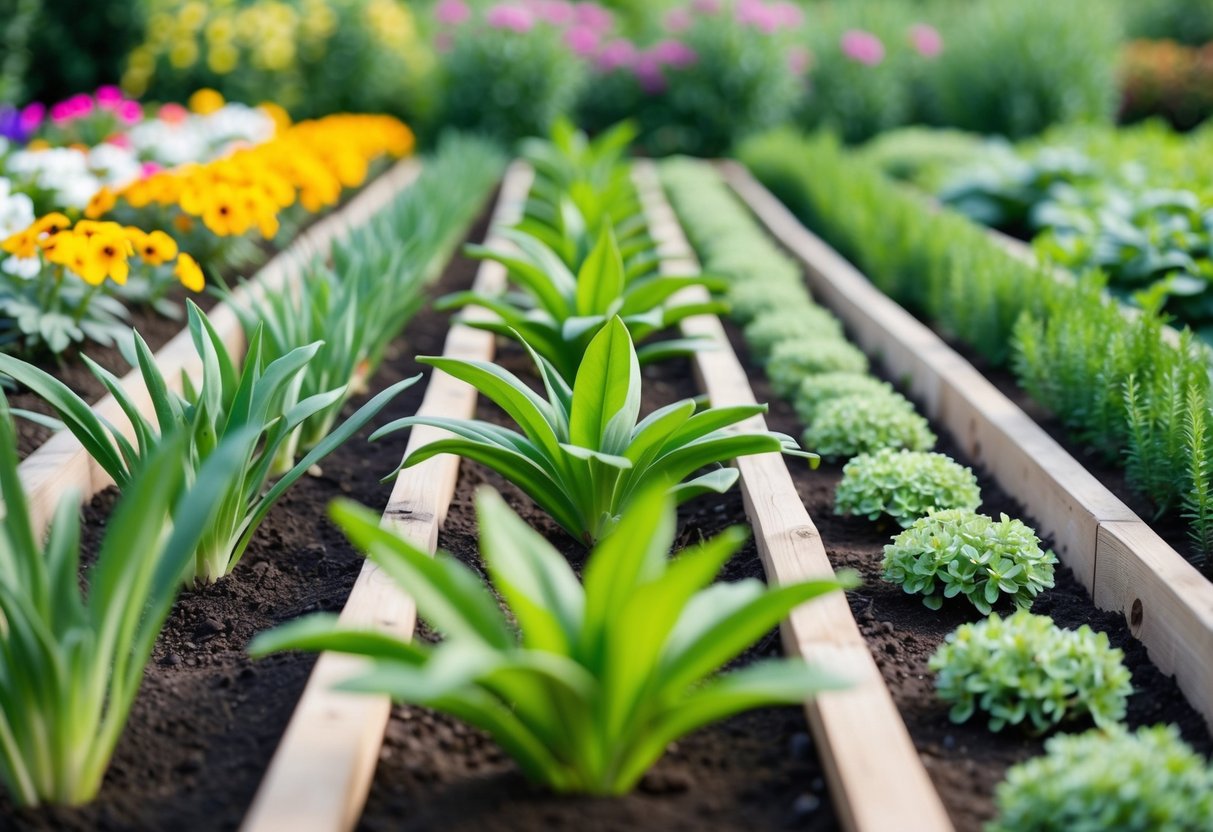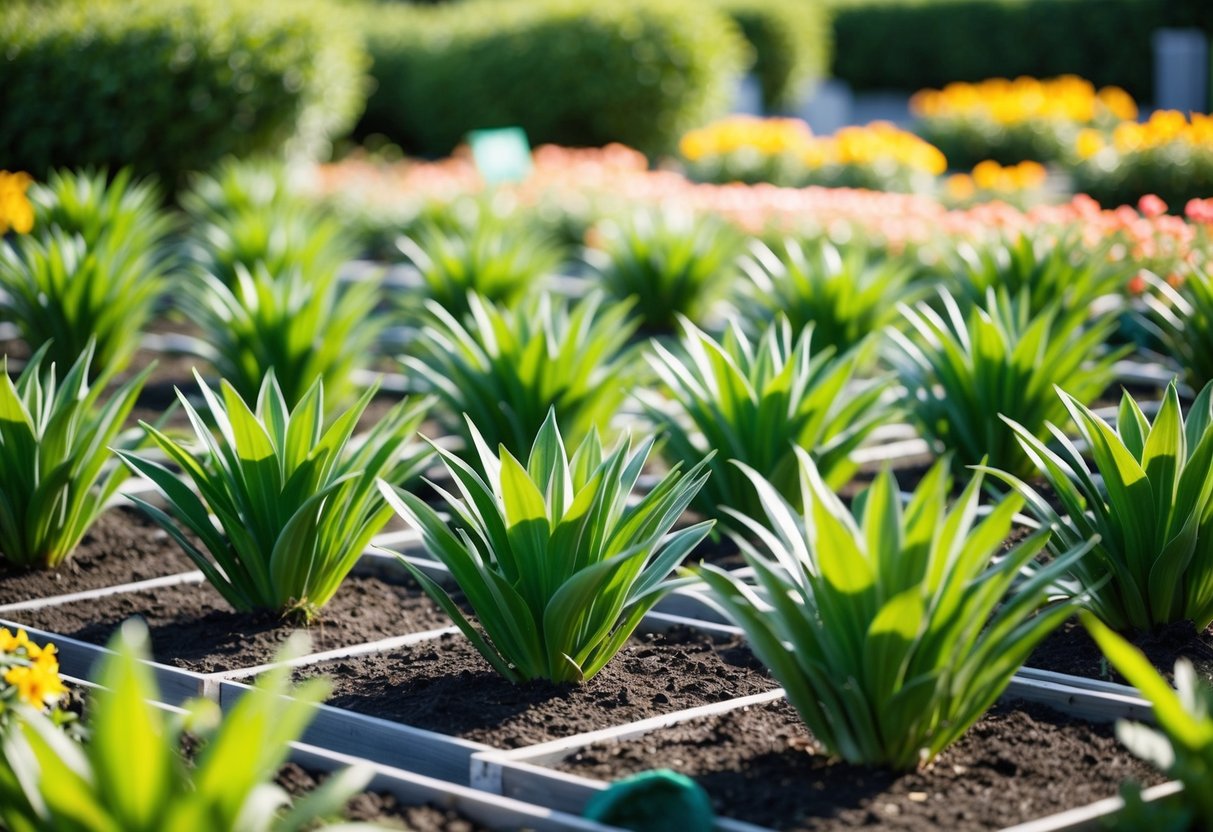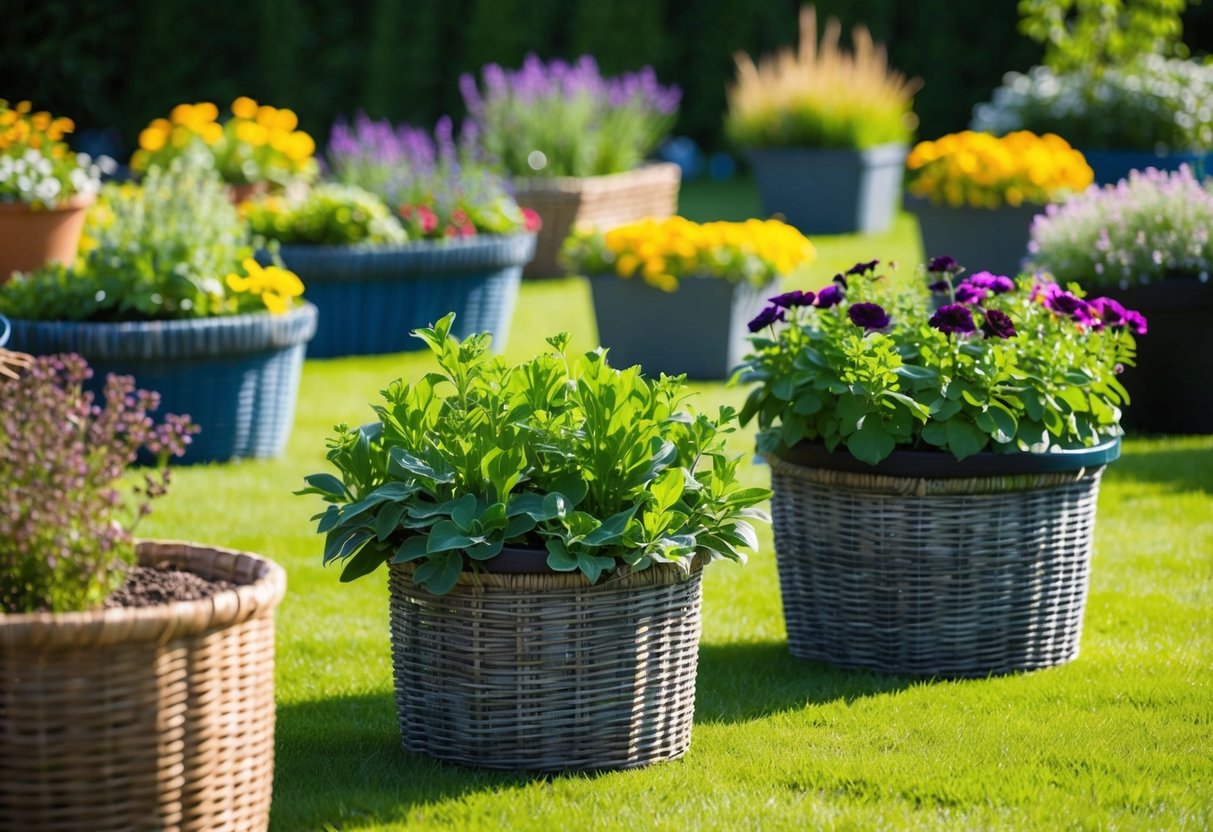How Far Apart Should Bedding Plants Be? A Gardener’s Guide to Perfect Spacing
When you’re planning a garden, one of the key details to consider is how far apart to space your bedding plants.
Most bedding plants should be spaced about 6 to 12 inches apart, depending on the plant type and your specific landscaping goals. This spacing helps your plants to thrive by giving their roots enough room to grow while also allowing for good air circulation.

If you’re laying out a flower bed or working on a landscaping project, the spacing can affect how full and lush the area will look.
Closer spacing might result in a dense, full appearance, but it could also mean more competition for resources among the plants. On the other hand, wider plant spacing allows for stronger root development and healthier growth but might initially appear sparse.
Consider the types of plants you’re using, as each variety may have its own needs. For instance, some might need more space than others due to their growth patterns or mature size.
For more detailed advice on calculating the number of plants you need for your space, check out this plant spacing calculator.
By taking the time to plan your plant spacing carefully, you’ll create a beautiful and thriving garden space.
Understanding Plant Spacing

When starting a garden, it’s important to know how far apart to place your plants.
Spacing affects how well your plants grow and stay healthy. It is also key in ensuring your garden utilizes space effectively.
Basics of Spacing Bedding Plants
Bedding plants need room to grow and develop properly. It’s essential to leave enough space between individual plants and between rows.
A general rule is to match plant spacing with specific needs mentioned on seed packets. For example, impatiens may need to be spaced 8 to 12 inches apart, while marigolds might require different spacing.
Using this guideline ensures that each plant receives adequate sunlight and nutrients. Crowded plants risk being unhealthy and less productive. So, make sure you check the specific spacing requirements for each type of bedding plant you grow.
Spacing for Growth and Health
Giving your plants proper space is crucial for their growth and health.
Adequate spacing allows for good air circulation, essential to prevent mold and disease. For special cases like pole beans, you might need to allow around eight plants per square foot on a trellis. In smaller flower beds, lobelias only need 4 to 6 inches of space.
Additionally, spacing helps in managing water usage. Plants with enough distance between them can better utilize available water and nutrients. This reduces competition among plants, letting each one thrive.
Plant Calculator Utilization
Using a plant calculator can simplify the task of determining how many plants are needed for a specific area.
If you plan to cover a garden area of 120 square feet and want to keep plants 10 inches apart, such calculators can help. For instance, this specific calculation might require around 174 plants to fill the space effectively.
Tools like these save you from guesswork and help maintain optimal plant health and growth. They take into account space requirements and total square feet, making garden planning more efficient. Utilizing a plant calculator ensures your garden is well organized and maximizes its potential.
Soil and Nutrition Fundamentals

Healthy bedding plants start with the right soil and nutrition. Excellent growth requires well-drained soil, enriched with compost and manure. These elements provide the nutrients necessary for your plants to thrive.
The Importance of Well-Drained Soil
Well-drained soil is essential for bedding plants. It prevents water from standing and allows roots to breathe. If your soil holds too much water, plants might suffer from root rot.
Consider adding vermiculite or perlite to improve drainage. These materials help create air pockets, ensuring that water moves freely.
Testing your soil can be a good idea. If heavy clay is present, you might need to break it up for better drainage.
Enriching Soil with Compost and Manure
Adding compost or manure can greatly enrich your soil. These organic materials improve soil texture and provide nutrients like nitrogen, phosphorus, and potassium.
Compost can be made from kitchen scraps and garden waste. It naturally decomposes, creating a rich blend for your plants. Manure from farm animals works similarly but should be well-rotted before use.
Mix these materials into the topsoil deeply and evenly. Regular application—once or twice a year—keeps soil fertile. This process enhances root development and makes your plants healthier. Additionally, it reduces the need for frequent fertilizing. Integrating these practices ensures a robust foundation for vibrant bedding plants.
Plant Selection and Arrangement

When planning a bedding plant display, selecting suitable plants and arranging them effectively is key. Consider factors like sunlight, plant size, and aesthetics to create a vibrant garden.
Choosing the Right Bedding Plants
Start by assessing the area where you want to plant. Determine if it receives full sun or partial shade. This influences which plants will thrive.
For sunny spots, select annual bedding plants like petunias or marigolds that love sunshine. If your area is shadier, impatiens or begonias work better.
Mix and match colors and textures for visual appeal. Choose plants with different bloom times to ensure your flower beds stay beautiful from spring through fall.
Consider the plant’s size at maturity, and avoid overcrowding by leaving enough space for growth. This prevents disease and promotes better blooms.
Designing Your Planting Bed
Designing your planting bed begins with arranging plants to maximize their beauty and health.
Use the right spacing techniques. For mass planting, space plants uniformly. A general guideline is to place plants at distances equal to half their mature width. For example, if plants grow to 12 inches wide, space them 6 inches apart.
Create layers by placing taller plants at the back and shorter ones in the front. This arrangement ensures that every plant can be seen and enjoys sufficient light.
Curved rows can add interest, breaking away from straight lines to give a more natural look. Adjust plant locations knowing that roots need space to grow and access water.
Maintenance and Care Techniques

Taking good care of your bedding plants keeps them looking vibrant and healthy. You will need to focus on regular watering and removing spent flowers to keep them tidy and also prevent common diseases such as powdery mildew.
Regular Watering and Deadheading
Regular watering is important for bedding plants. You should water them when the soil feels dry about an inch below the surface.
Proper watering ensures healthy growth and keeps your plants from wilting. It’s essential to water in the morning, so the plants have enough moisture throughout the day.
Deadheading, or removing dead flowers, is another key task.
Carefully remove spent flowers to keep your plants tidy and encourage new blooms. Use your fingers or small scissors to snip off wilted flowers. This process not only makes your garden look better but also helps the plant direct energy toward new growth.
Preventing Common Plant Diseases
Preventing diseases like powdery mildew starts with good practices.
Ensure plants have enough space between them for air circulation. This reduces the chances of mildew growing on leaves.
Keep the leaves dry by watering at the base of the plant rather than overhead.
Pruning is another effective method to prevent disease. Remove any diseased or dead branches quickly to stop the spread.
Regular checks help you spot problems early, allowing you to act fast before the disease affects other plants. Mulching around plants also stops soil-borne diseases from jumping to your plant leaves.
Containers and Baskets

When planting in containers or baskets, it’s essential to keep plant spacing, pot size, and potting mix in mind. Choosing the right basket or pot and caring for your plants can ensure healthy growth and vibrant displays.
Potting and Care for Container Plants
When potting bedding plants, use containers that have good drainage. This prevents water from sitting at the bottom, which can cause roots to rot.
A balanced potting mix provides the necessary nutrients while also promoting drainage.
Check the plant’s root ball. It should have enough space to grow, so select a pot that allows for expansion. A small root ball in a big pot can be prone to overwatering.
Watering is crucial. Before planting, soak the root ball completely.
Place the pot in a sunny spot, but shelter the plants from harsh afternoon sun to prevent wilting. For bedding plants grown in pots, soil moisture should be checked regularly, especially in hot weather.
Selecting Baskets and Pots
When choosing baskets, consider their size and material. Coconut coir or moss-lined baskets are popular due to their natural appearance and good drainage. These can be suitable for a variety of plants, including those that drape and trail.
For pots, go for those with adequate depth. Most bedding plants need room to expand, so select pots that comfortably accommodate their growth.
Also, consider the container’s aesthetic—a decorative pot can enhance the appeal of your garden.
Think about weight if you’ll be moving the pots. Lightweight plastic or fabric pots can be easier to manage.
Remember, spacing is important, even for different types of containers. Each plant needs enough air and light to thrive.







